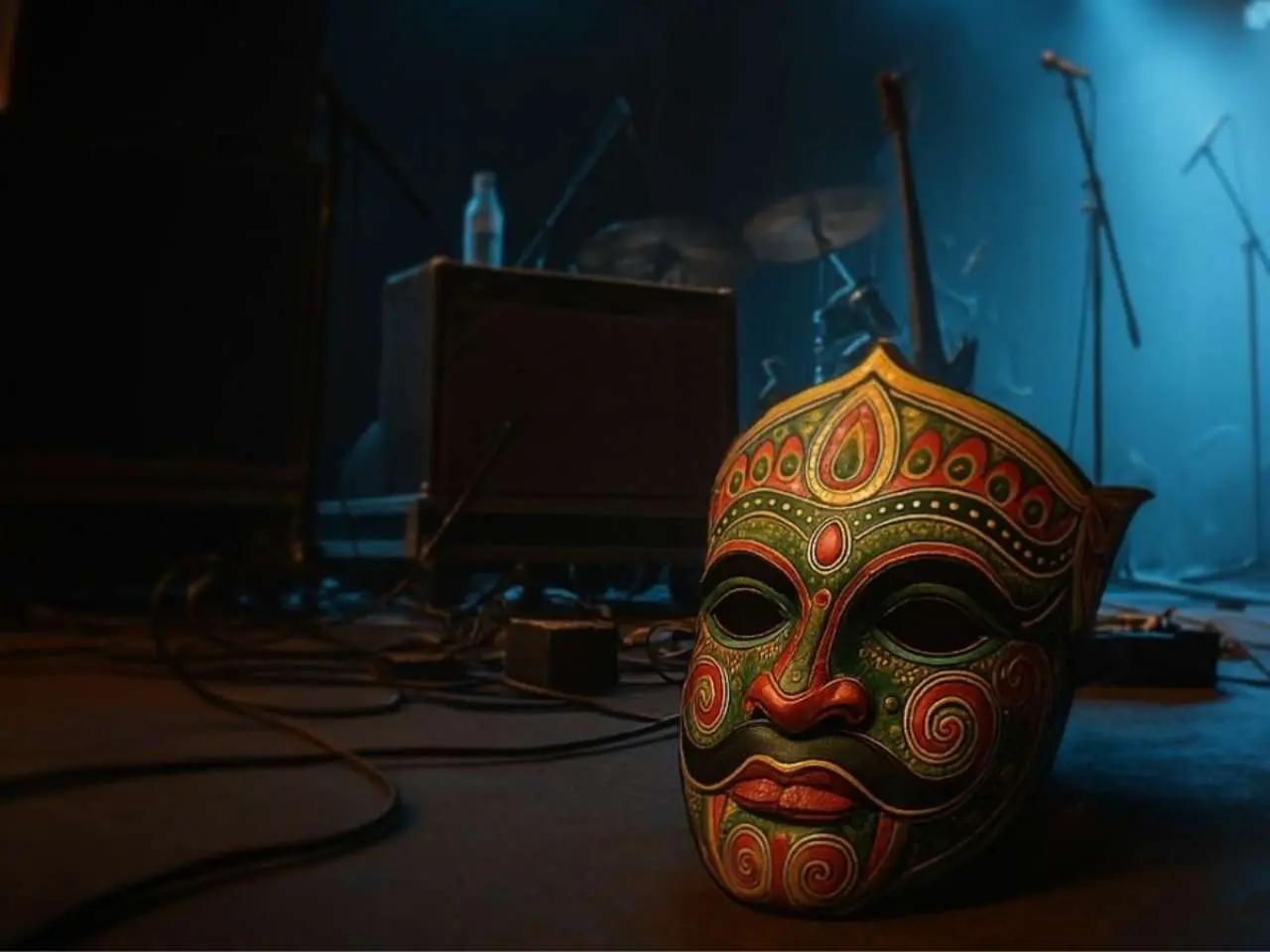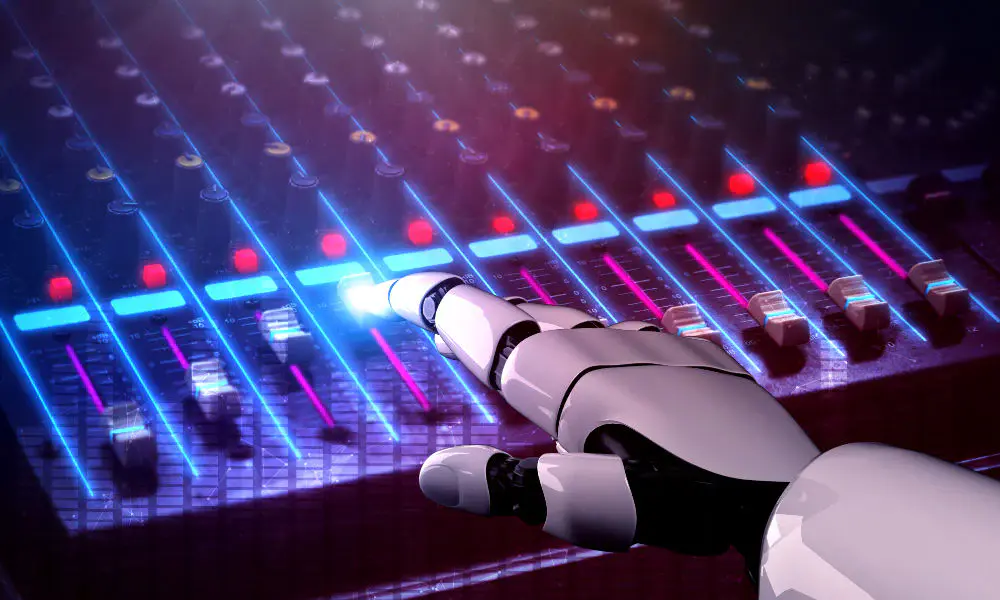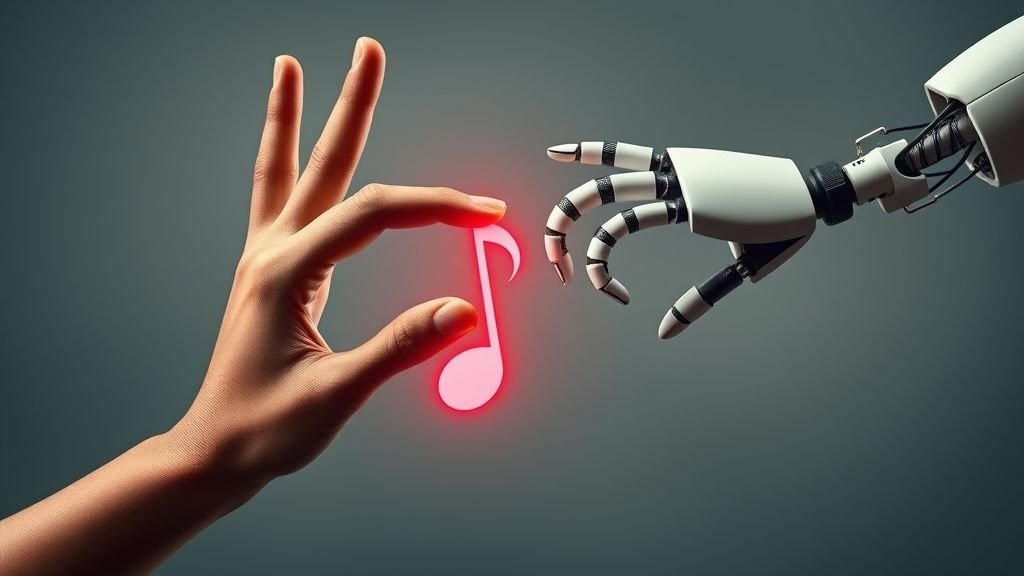Trilok: Is India’s new AI rock band a glimpse into the future of music or just a clever marketing stunt?
For young creators and digital commentators like you, this isn’t just about a band; it’s about the very definition of artistry in the age of algorithms. Is a machine capable of soul? Can code truly rock? Indian youth AI content creation is pushing boundaries everywhere, and music is no exception. We’ve seen AI-generated art, AI-written scripts, but an entire band? This requires a closer look.In this deep dive, we’ll dissect Trilok’s concept, explore the technology behind it, and weigh the arguments for and against AI music. We’ll also consider what Trilok means for the future of creativity in India AI could empower. Get ready to have your mind (and maybe your playlists) stretched.
I. So, What Exactly is Trilok? The Concept Behind India’s AI Rockers
Trilok isn’t your average garage band. This isn’t a group of humans using AI to enhance their music; Trilok is the AI. Launched by Collective Media Network (part of Collective Artists Network), Trilok is an ambitious experiment in digital performance and storytelling, designed from the ground up by their in-house AI innovation lab. It truly embodies the spirit of generative AI for Indian creators pushing boundaries.
A. Spiritual Vibes, Modern Rock: The Sound
- Fusion Focus: Trilok blends spiritual themes and traditional Indian mantras with high-energy modern rock. Think ancient chants remixed with electric guitars and powerful drums. Their debut track, “Achyutam Keshavam,” is the first taste of this unique fusion. Notably, this aims to resonate with a digitally native, yet culturally aware, Indian Gen Z audience.
- Fully AI-Generated: The visual identity, lyrics, vocals, and overall aesthetic choices are all AI-generated. Human direction guides the AI, but the output is machine-made. This makes it a fascinating case study in Indian youth AI content creation within music.

B. Beyond the Music: A Pop Culture Property
According to Collective Media Network’s CEO, Vijay Subramaniam, Trilok is more than just a musical act. It’s a “new genre, a new storytelling format.”
- Designed for Engagement: Trilok is built to be “heard, watched, streamed, memed and debated.” This isn’t just about dropping tracks; it’s about sparking discovery, community, and conversation across platforms. For Indian Gen Z, who live and breathe digital culture, this multi-format approach is key.
- Digital Avatars with Personalities: The bandmates are fully digital characters, each with their own identity, personality, and journey. This focus on creating virtual personas goes beyond mere music, turning the band into a full-fledged pop culture entity, similar to virtual influencers already popular with Indian youth AI content creation.
II. The AI Tech Behind the Music: How is Trilok Made?
So, how does a band like Trilok actually come to life? It’s all about advanced generative AI for Indian creators specializing in sound, visuals, and text. While specific algorithms aren’t fully disclosed, we can infer the technology at play:
A. Music Composition and Production
- Algorithmic Composition: AI models are likely trained on vast datasets of rock music, spiritual chants, and Indian classical music. This allows them to generate melodies, harmonies, rhythms, and even full instrumental arrangements in Trilok’s unique style. Tools like AIVA or Amper Music, while not necessarily used directly, represent the kind of AI powering such compositions.
- Vocal Synthesis: The “vocals” are synthesized using AI text-to-speech or voice cloning technology. This allows the AI to “sing” the mantras and lyrics with various vocal tones and textures, mimicking human performance. The quality of AI-generated voice in Indian content is rapidly improving.
- Automated Mixing & Mastering: AI-powered audio tools likely handle much of the mixing and mastering, ensuring the tracks sound polished and professional. This streamlines the production process, making high-quality music production more accessible, a clear benefit of generative AI for Indian creators.
B. Visuals, Lyrics, and Storytelling
- Text-to-Image for Avatars & Art: AI image generators (like Midjourney or DALL-E) are crucial for crafting the band’s digital avatars and their accompanying visual art. Prompts likely involve a blend of futuristic, rock, and traditional Indian aesthetics. These visuals are vital for the band’s cross-platform presence.
- AI-Assisted Lyric Writing: While human oversight is likely present, large language models (like ChatGPT) can generate or assist in writing lyrics and narratives. They can draw inspiration from spiritual texts and modern rock themes, further enabling Indian youth AI content creation.
- Video Production Automation: AI tools can automate aspects of video editing, motion graphics, and even create dynamic visualizers that respond to the music, essential for their social media strategy.
III. Hype or Future? The Great AI Music Debate
Trilok’s emergence immediately sparks questions that resonate deeply with young creators and pop culture enthusiasts. Is this truly the future of creativity in India AI can lead, or just a sophisticated novelty?
A. The “Future” Argument: Innovation and Access
- Democratization of Music: AI tools drastically lower the barrier to entry for music creation. Aspiring Indian Gen Z musicians without access to expensive studios or traditional training can now compose, produce, and even “perform” high-quality music. This is a massive leap for generative AI for Indian creators.
- Unlocking New Sounds: AI can explore musical combinations and patterns that human composers might not easily conceive. This leads to entirely new genres and experimental soundscapes, pushing artistic boundaries.
- Scalability and Speed: AI can produce music and content at a scale and speed impossible for human-only teams. This is crucial in the fast-paced digital landscape where constant new content is king.
- Engaging New Audiences: The novelty of an AI band can attract new listeners who might not typically engage with spiritual or even rock music. It creates a talking point and a unique identity.

B. The “Hype” Argument: Soul, Authenticity, and Ethics
- Lack of Human “Soul”: Critics argue that music needs human emotion, lived experience, and imperfection to truly resonate. Can an algorithm truly express sorrow, joy, or rebellion? For many, AI music lacks that undefinable “soul.”
- Authenticity Concerns: Indian Gen Z values authenticity. While Trilok is transparent about being AI, the question remains: does listening to a machine-generated band offer the same connection as a human band with real struggles and triumphs?
- Copyright and Ownership: This is a major ethical tightrope. If AI is trained on existing human-created music, does its output infringe on copyrights? Who owns the AI-generated music – the developers, the prompt engineers, or no one? This is a hot debate in the future of creativity India AI faces.
- Job Displacement: As AI music becomes more sophisticated, there are concerns about its impact on human musicians, composers, and producers. Will it lead to job displacement in the long run?

IV. Broader Impact: What Trilok Means for Indian Creative Industries
Trilok isn’t just a band; it’s a barometer for the broader trends in Indian youth AI content creation. Its success, or even its failure, will offer valuable insights.
- New Business Models: Companies like Collective Media Network are exploring new ways to create and monetize intellectual property. This could lead to innovative business models for the entire entertainment industry in India.
- Pushing Boundaries of Digital Art: Trilok’s fully digital presence encourages further experimentation in virtual performances, digital avatars, and immersive online experiences. This aligns with the rapid growth of virtual influencers and digital fashion, areas where generative AI for Indian creators is already active.
- Accelerating AI Adoption: High-profile projects like Trilok introduce AI to a mainstream audience, normalizing its use in creative fields. This can accelerate the adoption of AI tools by more creators across different mediums, shaping the future of creativity in India AI will influence.
- Sparking Necessary Conversations: Most importantly, Trilok forces vital conversations about the role of AI in art. These discussions around ethics, authenticity, and human collaboration are essential as AI becomes more integrated into our creative lives.
For more on the ethical considerations, check out our recent post: Ethical AI in Content Creation: What Indian Gen Z Creators Need to Know. This provides crucial context for any Indian youth AI content creation endeavor.
Indian Gen Z is fearless when it comes to technology. They’re not afraid to experiment, to remix, and to challenge established norms. Trilok is a perfect reflection of that spirit. Whether AI bands become the next big thing or remain a niche curiosity, they’re undeniably pushing the conversation forward.
At DraftCulture, we believe the most exciting innovations happen at the intersection of culture and technology. Trilok is a prime example. It forces us to ask: what can’t AI do? And more importantly, what will humans choose to do *with* AI? The stage is set, the algorithms are humming, and the future of music in India just got a whole lot more interesting.





